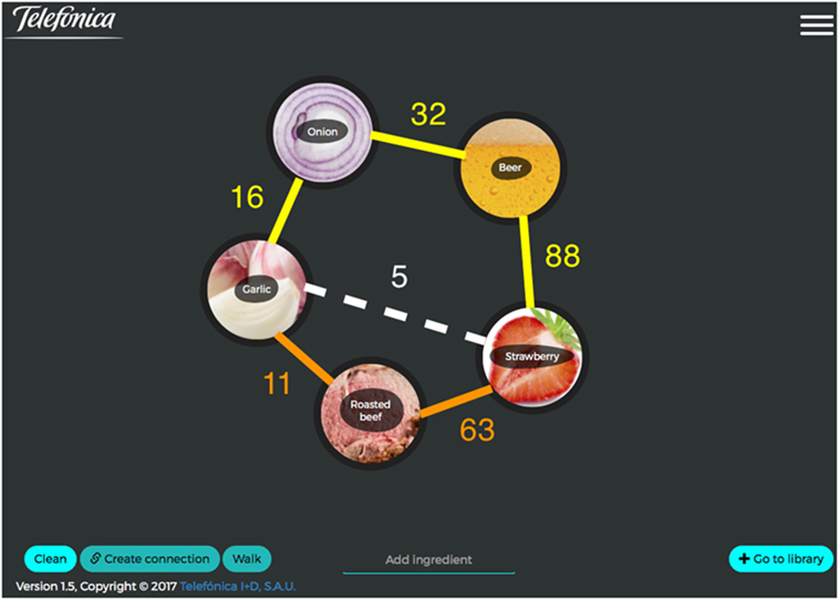You just came back from a romantic night out at your favorite restaurant. Unfortunately, as luck would have it, the meal tasted a little off. None of the ingredients had gone bad, but they tasted weird together. This feeling is difficult to describe in words.. The meal just didn’t come together the way all the ingredients in a tasty burrito come together.
Did you know, though, that your feeling was a great deal more than just a subjective impression? There is math behind this “feeling”, according to the studies by Tiago Simas and his team from Telefonica Research in Barcelona (Spain) and Cambridge University (UK). In a culinary tour-de-force that brings together the two different worlds of flavors and mathematics, the researchers demonstrate quantitatively a new concept that can help analyze cuisines worldwide, and help differentiate them. They introduce the concept of “food-bridging” that complements the already existing concept of “food-pairing”.
Before we explore that topic though, let’s get the basics straight: “food-pairing”, as formalized by chefs François Benzi and Heston Blummenthal in 1992, is chemically defined as two ingredients that have chemical compounds (flavors) in common. In a 2011 paper, food scientist Yeol-Yong Ahn of Harvard did a very thorough analysis of food-pairings using a mathematical technique called “network complexity”.
Simas’ team then built on this pairing analysis to introduce the concept of “food-bridging”. Think about it this way: choose your favorite big city and think of its dense road network. All the intersections are called nodes, and in our food network, they represent different kinds of foods (beverages can be used as well). If two foods are well paired, they can be connected by a single roadway. If they don’t, they can be bridged by going through different nodes (foods) that can be successfully paired, until you reconnect the original two together though a chain of nodes. That’s bridging. For example, strawberry and garlic have only 5 shared chemical compounds (flavors), making them not ideally suited for pairing, as you would agree. But garlic shares 16 flavors with onions, which shares 32 flavors with beer, which shares 88 flavors with strawberries! Whew! And herein lies the recipe of a garlic-strawberry sauce.
Using this formulation, the researchers were able to mathematically explore world cuisines. Four “food classes” were extracted from this data, which can be represented in the following way: draw a square, then split that square into four equal squares. The two squares in the right column represent “high food-bridging”, meaning that ingredients connect well with each other via other ingredients. The two squares on the top row represent “high food-pairing”, meaning that ingredients go well together directly. We thus have four categories: 1) low food-pairing + low food bridging (bottom-left square), 2) low food-pairing + high food-bridging (bottom-right square), 3) high food-pairing + low food-bridging (top-left square), and 4) high food-pairing + high food-bridging (top-right square). Interestingly, different geographical cuisines fit in these different boxes, as follows:
- Low food-pairing + low food-bridging –> East Asian cuisine (Korea, China, Japanese), which contrasts different flavors
- Low food-pairing + high food-bridging –> Southeast Asian cuisines (Indonesia, Malaysia, Philippines, Thailand, Vietnam), which contrast ingredients, but bridge these contrasts with other ingredients
- High food-pairing + low food-bridging –> Southern, Eastern, Western Europe, and North American cuisine, who mainly pair foods in such a way that flavors are intensified.
- High-food pairing + high food-bridging –> Latin American cuisine (Caribbean, Central American, South American, and Mexican), which reinforce common flavors using both pairing and bridging.
The geographic distribution of these food-classes was not predefined. Nevertheless, the clustering of the different regional cuisines in the classes was revealed through this analysis. Some elements like texture, ingredient concentration, and cooking processes were not explored when seeking ways to combine ingredients for the optimal dish, thus there is room for improvement. In theory though, the mathematics of this study can accommodate these extra variables. Cooking really now lies at the intersection of art and science.
Instead of leaving dinner disappointed, give these mathematical tools (via this user-friendly website) to your favorite restaurant or use them yourself to analyze your secret recipes, and see what other ingredients can either pair or bridge your favorites. Bon appetit!


